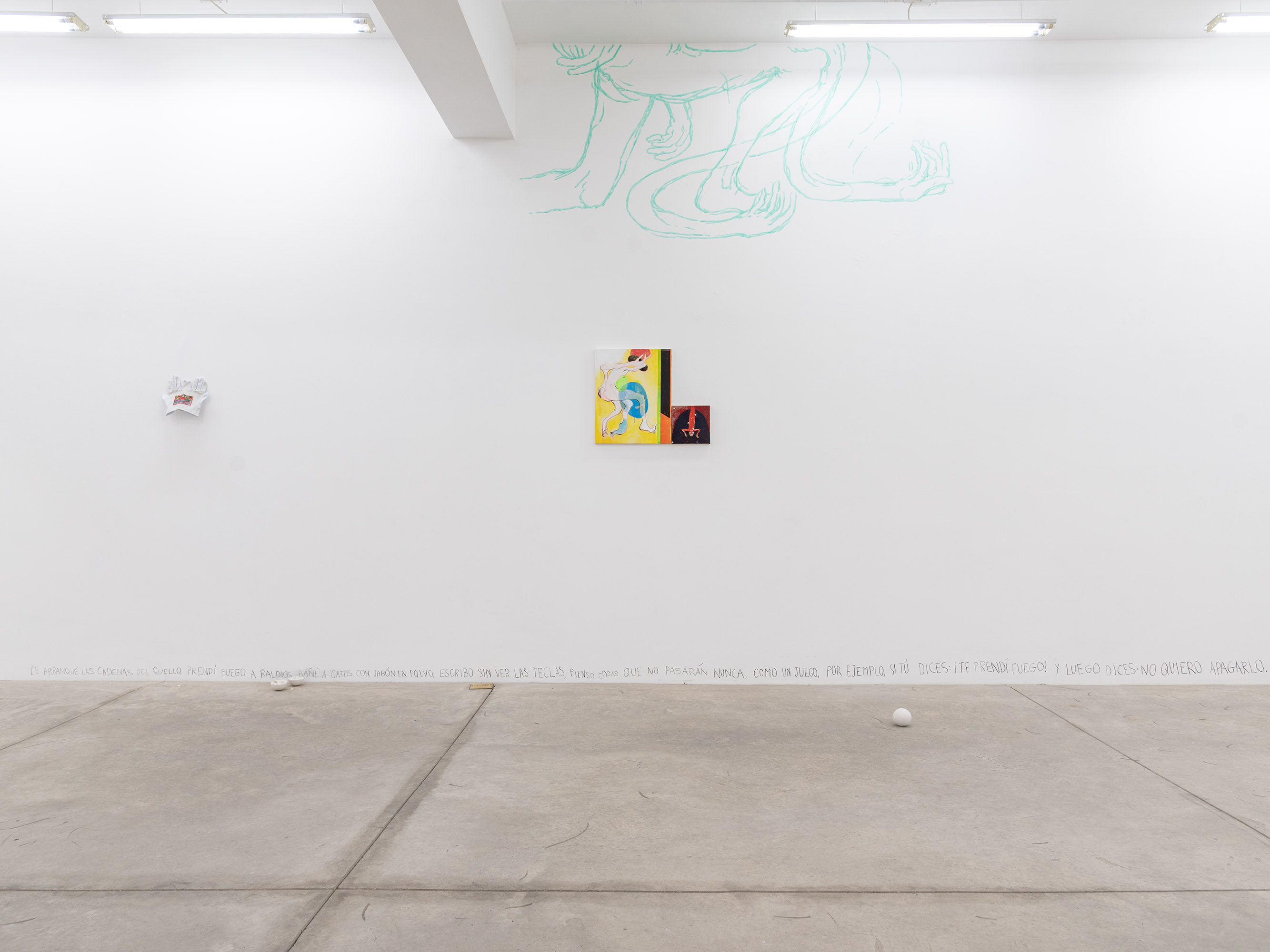
Review
Four Hand Poem. Héctor Jiménez Castillo and Edgar Cobián at Tiro al Blanco
by Alan Sierrra
Reading time
4 min
At the Tiro al Blanco Gallery, Héctor Jiménez Castillo and Edgar Cobián have crafted an exhibition where images breathe, unfold, and engage in dialogue. Me saco las pestañas [I Pull Out My Eyelashes], the title of this joint show, functions as a laboratory in which each added piece challenges the next, generating a history of gestures within the space and proposing a transformation of the original ideas. This project is not merely a formal exploration but a questioning of the boundaries between the personal, the authorial, and the collaborative.

The works of Jiménez and Cobián form a suite where bodies are not mere representations but poetic configurations. Jiménez’s figures maintain a hieratic quality that evokes ancient times, much like Egyptian art, where each pose seems to echo the previous one. In contrast, Cobián’s pieces suggest bodies in constant mutation, figures where the human and the object merge, blurring identity boundaries. Their figurations—hands transforming into feet, gestures turning into mythical allegories like Adam, the hanged man, or Dionysus—provoke laughter, sympathy, and, at times, a visceral unease.

Among the exhibited works, certain pieces stand out as narrative devices in their own right. Guantes para vista cansada (Dionisio de París) [Gloves for Tired Eyes (Dionysus of Paris)] presents a pair of white gloves arranged like an open book, in a scene that Jiménez describes as “the reading of a fairy tale.” This seemingly simple piece alludes to the ritual and magical nature of everyday gestures, re-signifying objects from their materiality to their symbolic resonance. Similarly, De mi sala, médula [From My Living Room, Marrow] invites reflection on the amphitheater through the installation of a structure from a domestic curtain mimicking a spine—an appropriation that highlights the triviality with which we learn about the body using anatomical models.

Cobián’s work Brazo a torcer [Twisting Arm] stands out, featuring a chain that seems to traverse containers filled with instrument-cleaning fluid, creating a contrast between the elegance of the objects and the arbitrariness of the signs, questioning the boundaries between the everyday and the lyrical. The neon colors vibrate, adding a contemporary glow that revives ancient themes, turning them into visual enigmas. This use of light not only emphasizes his urban attitude but also evokes a sense of immediacy and fleetingness. Jiménez, on the other hand, opts for a muted palette reminiscent of his earlier works with turmeric and beet dye, giving his drawings a strange temporality. His practice, far from mass production, embraces a return to the elemental: a “kitchen of images” where each ingredient unfolds with expressive and symbolic potential.

The experimental nature of the exhibition is amplified by the absence of a curator. Rather than a lack, this void translates into an act of mutual trust between the artists, who free themselves from the institutional framework to play and take risks. The setup rejects the premeditation of a rendering and instead grows organically: a train of thought leaving traces of the creative process in every corner of the space. Details like the repair of a broomstick or an electric cable become gestures resonating with the precariousness and honesty of the artistic craft, reminding us that art can be an accumulation of small fixes and creations.

Me saco las pestañas is more than just an exhibition: it’s a statement on process and dialogue. An exhibit that resists the rigidity of the finished product to dwell in the dynamism of the metabolic, in the constant fluctuation between the solid and the ephemeral, between the deliberate and the spontaneous. Like the decorated sarcophagi that Héctor Jiménez recalls from his first visit to the Brooklyn Museum, these works aim not merely to be seen; they exist to transcend the barriers between artwork, creators, and audience. Far from being an attack on painting, the exhibition format, or the viewer, this show invites us to pay attention to detail, to observe the minutiae, and, above all, to inhabit gestures with full awareness.
Translated to English by Luis Sokol
Published on December 14 2024